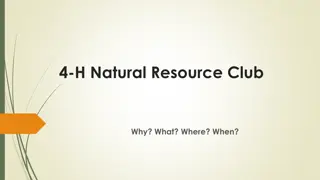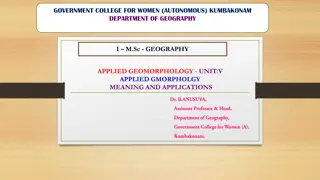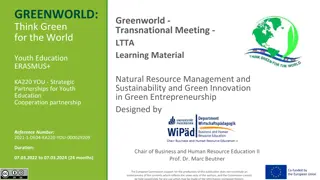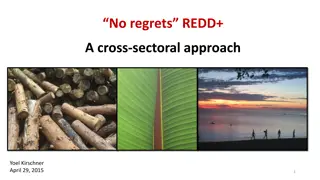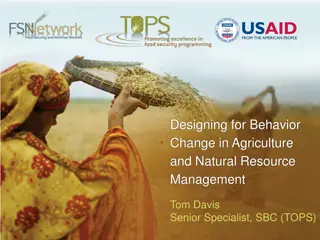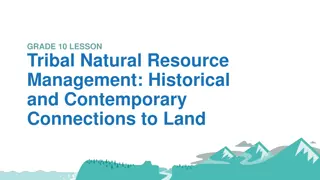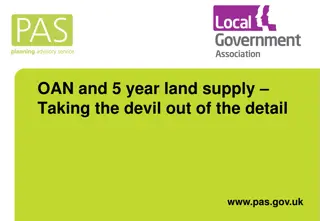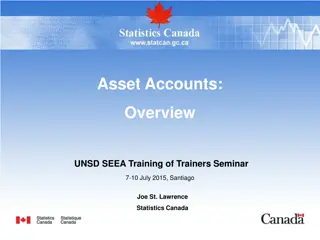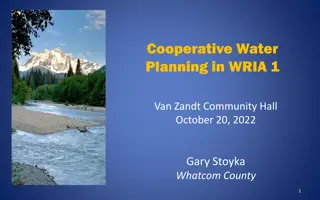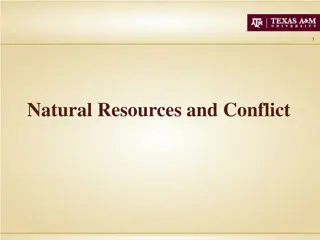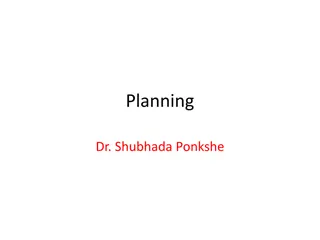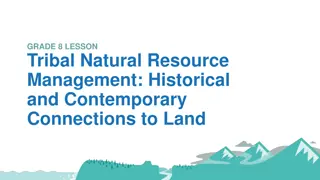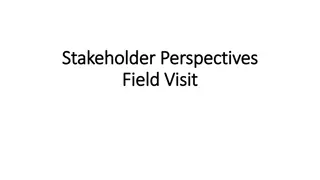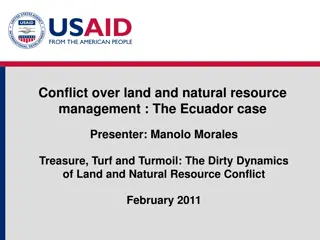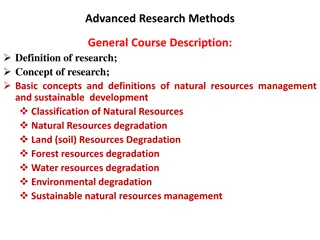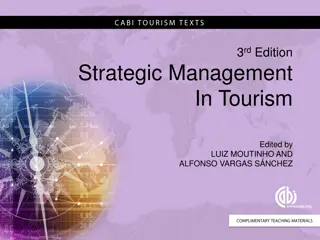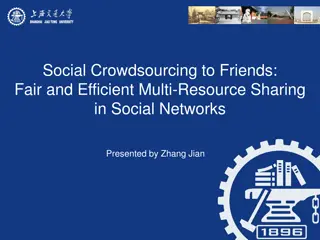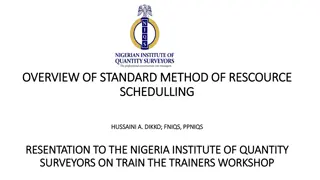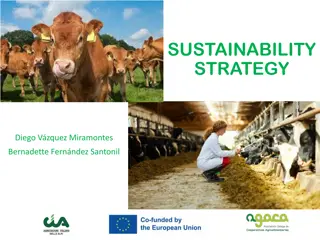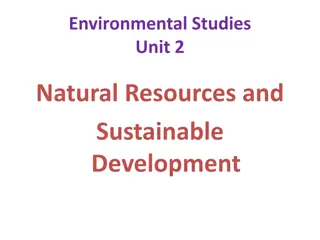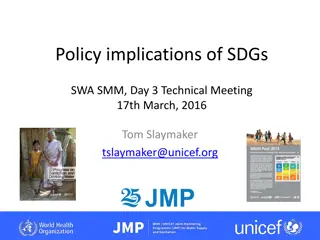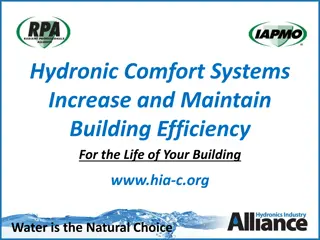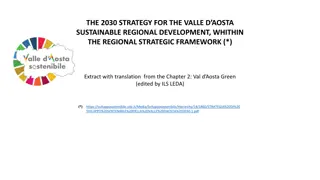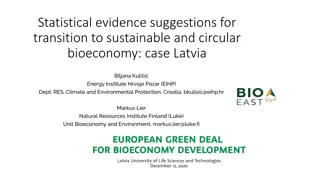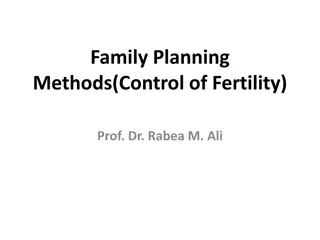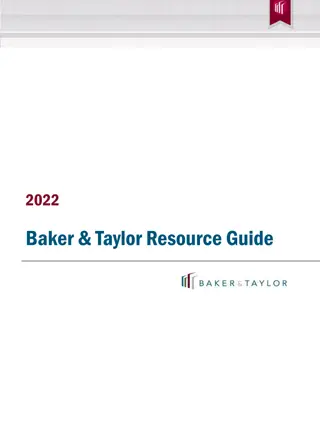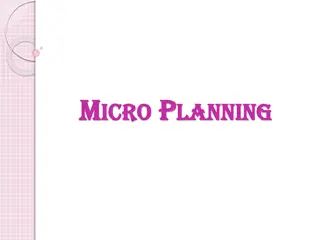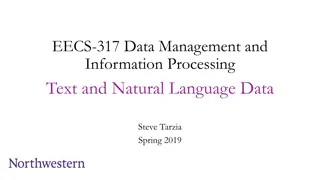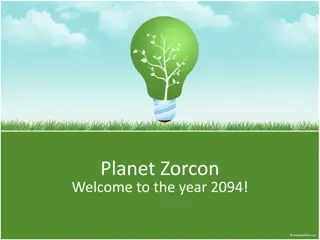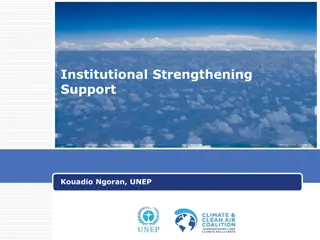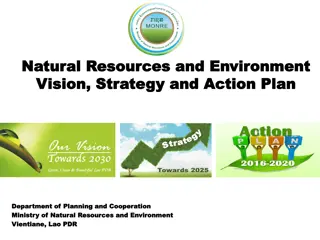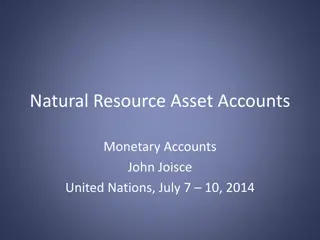Sustainable Strategies for Natural Resource Management Planning
Natural Resource Management (NRM) involves the conservation and rejuvenation of resources like soil and water, aiming to enhance the quality of life for present and future generations. This comprehensive approach emphasizes the use of indigenous knowledge, scientific interventions, and community participation to protect resources, reduce runoff, harvest rainwater, and promote environmental models in development activities. Strategies include a participatory approach led by PRIs, site-specific interventions, and the integration of farming systems with a focus on watershed management. Continuous monitoring and evaluation play a crucial role in ensuring the success of NRM initiatives.
- Sustainable strategies
- Natural resource management
- Conservation
- Community participation
- Watershed management
Download Presentation

Please find below an Image/Link to download the presentation.
The content on the website is provided AS IS for your information and personal use only. It may not be sold, licensed, or shared on other websites without obtaining consent from the author. Download presentation by click this link. If you encounter any issues during the download, it is possible that the publisher has removed the file from their server.
E N D
Presentation Transcript
IWMP Strategies and Approaches in Planning and Implementation of NRM works
NRM Natural Resource Management refers to the management of natural resources such as land, water, soil, plants and animals, with a particular focus on how management affects the quality of life for both present and future generations
NRM - Objectives To conserve & rejuvenate natural resource like soil, water & biomass To protect fertile top soil through micro level scientific interventions To reduce the volume & velocity of surface and sub surface runoff To harvest rainwater so as to replenish the ground water storage To enhance vegetative cover for mitigating drought
To create environment friendly models in development activities To promote & utilise indigenous knowledge and skills Taking up activities in both private & common lands on a water shed approach Conservation of wet lands like ponds, paddy fields, back waters and protection of mangrove forests, sacred groves, springs etc
NRM Strategy Planning & Implementation Leading role by PRIs Participatory approach in NRM Enhanced community participation through WC, UGs & JLGs Scientific Planning use of GIS & Remote Sensing Ridge to valley approach Site specific interventions Comprehensive development of multiple natural resources based on watershed approach Integrated farming systems based natural resources management Building both natural and social capital simultaneously Fostering Convergence and Synergy among Programmes Continuous monitoring and evaluation (M&E)
NRM Planning Base Line Survey Socio-Economic conditions Soil and Land Use Agriculture: crops, yields, horticulture etc Production/farming systems Livestock and Fisheries Forests and Grass land, ago-forestry Livelihood Status/pattern, sources, dependance Hydrology and Water Resources Resource conservation and water use
Baseline survey Act as a bench mark of the Project for future evaluation and impact analysis. Collection of socio-economic details with Household survey. Bio-physical survey to collect details of natural resources Household Census Baseline Survey
Bio-physical Survey Geo-referenced data collection of particular natural resources. Geo-referenced soil sample collection from representative area. Survey number wise collection of land details about land acreage, ownership, crop cultivated(season), irrigation source and season details. Natural Resources Bio-physical survey Household Census Baseline survey
PRA Techniques Local Knowledge PRA Technique Natural Resources Bio-Physical Survey Household Census Baseline Survey
Net Planning Meeting with local community members Meeting with local community members Understanding various schemes running in the project area for Understanding various schemes running in the project area for convergence. convergence. Detail Budgeting for each activity to be undertaken under IWMP. Detail Budgeting for each activity to be undertaken under IWMP. Identifying interventions in each single plot of the watershed Identifying interventions in each single plot of the watershed Group Discussion of activities with Group Discussion of activities with - -Watershed committee Watershed committee - -Farmers(Small, Marginal) & Agricultural Farmers(Small, Marginal) & Agricultural labours - -Women group Women group - -BPL,SC/ST Population BPL,SC/ST Population labours
Net Planning Activities Planning Net Planning Local Knowledge PRA Techniques Natural Resources Bio-Physical survey Household Census Baseline Survey
NRM activities envisaged in IWMP Afforestation Staggered trenching Contour and graded bunding Bench terracing Land development Vegetative reinforcement Live fencing Mulching Agro-forestry
Drainage line treatment with a combination of vegetative and engineering structures Earthen checks Brushwood checks Gully plugs Loose boulder checks Gabion structures Underground dykes
Development of water harvesting structures Low-cost farm ponds Check-dams Percolation tanks/pits Pond Renovation Ground water recharge through wells, bore wells, and other measures Rain water harvesting structures
NRM Implementation Works in common land by UGs In private land by the individual beneficiaries coordinated by beneficiary groups Estimates by WDT Engineers TS & Check Measurement by LSGD Engineers Approved rates of PWD/Soil Conservation/Agriculture/Forest or Local rates
TS & Check Measurement is not required for those works taken up under approved unit cost Mobilization advance & part payments for UGs WDF for works in private land All financial transactions only with the approval of WCs Documentation of works in all stages Information Boards should be exhibited at worksite Social Audit by Grama Sabha






